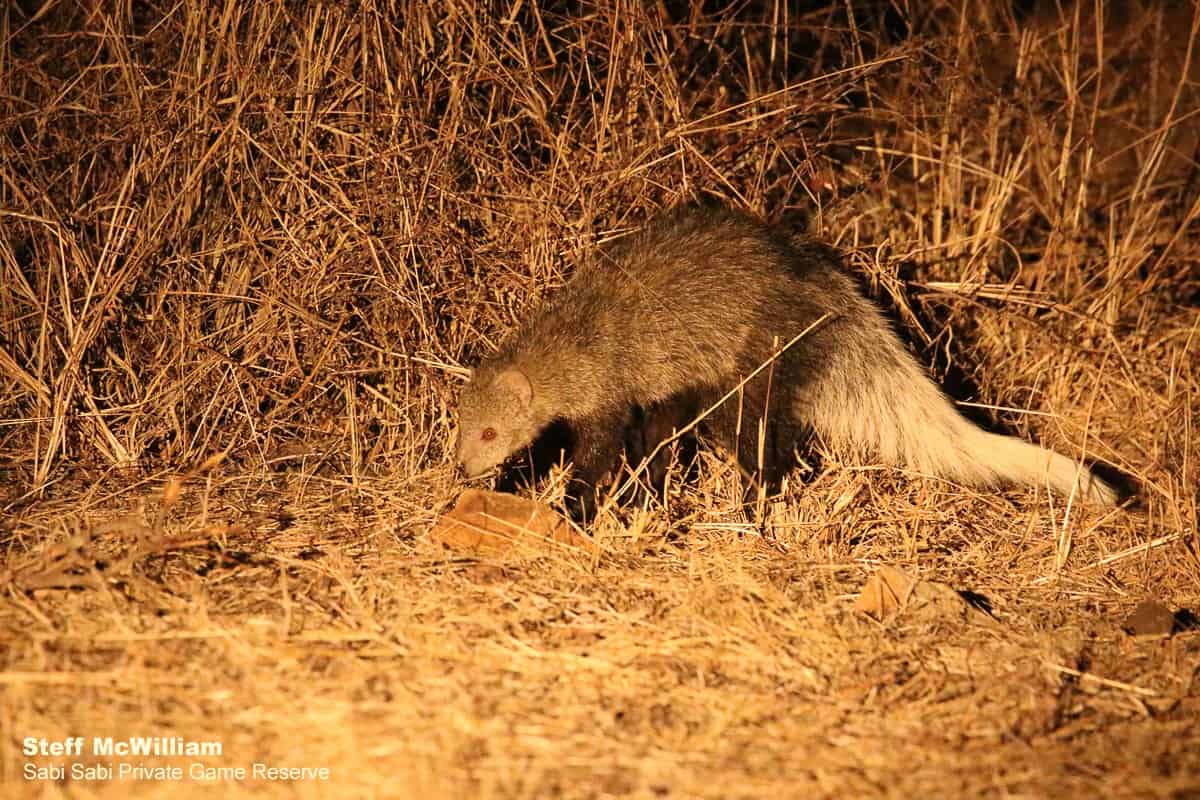White-tailed Mongoose
on Oct 25, 2019Species name: White-tailed Mongoose
Scientific name: Ichneumia albicauda
Weight: Male: 3kg - Female: 3.5 kg
Shoulder height: Male: 25-30cm - Female: 30 cm
General habitat: Inhabiting a large range of areas from woodlands and savannah to forests but avoiding arid areas and wetlands.
Diet: Mostly insectivorous although it is a capable hunter of rodents, birds and will feed on berries and bird eggs given the chance.

The White-tailed Mongoose is the largest existing species of mongoose on the planet and the only species in the genus Ichneumia. It is one of the only large, solitary mongooses and is found throughout most of Sub-Saharan Africa and even various geographic locations on the Arabian Peninsula. They typically prefer densely vegetated areas where foraging is easier and den sites or burrows are plentiful.
They are the only nocturnal solitary mongoose that occurs here at Sabi Sabi and are formidable hunters, preying on lizards, ground nesting birds, rodents and will occasionally feed on carrion given the chance. Other food items may include vegetable material, berries, fruits and even bird eggs which they will usually crack by throwing between their hind legs against rocks or other hard substrates.
They forage alone more often than not and are incredibly shy and secretive creatures. On occasion they may be sighted in pairs or small groups which usually consist of mating pairs or females and their young. Although they may share a den site or territory, they will usually forage alone. Not much is known about the courtship process of the White-tailed Mongoose but young are most often sighted in late summer, suggesting they breed seasonally, once a year. Babies are weaned by 9 months and disperse out of their home ranges, usually reaching sexual maturity at the age of 2 years. Litters can be from 1-4 and the female usually gives birth in a burrow or den site after a gestation period of about 60 days.
The White-tailed Mongoose gets its name from its incredibly large, bushy white tail. This tail serves as an amazing defense strategy as white shows up more clearly in the dark than the darker grey coat. In the event that a predator is hunting and stalking it, they will more than likely focus on the larger, more visible tail and may serve to protect the main body cavity, head and vital organs should a predator attack it. Even the species name “albicauda” refers to the characteristic white tail with the Latin word “albus” meaning “white” and “cauda” meaning “tail”.
My Memorable Sighting
One evening our amazing tracker Donald spotted a large owl perched in a nearby tree and upon closer inspection we discovered that it was indeed a Verreaux’s Eagle-owl with a dead snake in its beak. After some time, a bit of movement below caught our eye and only then did we see a very confused looking White-tailed Mongoose below, moving in circles, searching adamantly for what we can only presume was his stolen meal. From the behaviour of the mongoose we drew our own conclusions, but the real events of that evening will ultimately remain a mystery. Either way it made for one exciting night drive with a small glimpse into the dramatic lives of the animals that get to call Sabi Sabi home.
Photo Content










